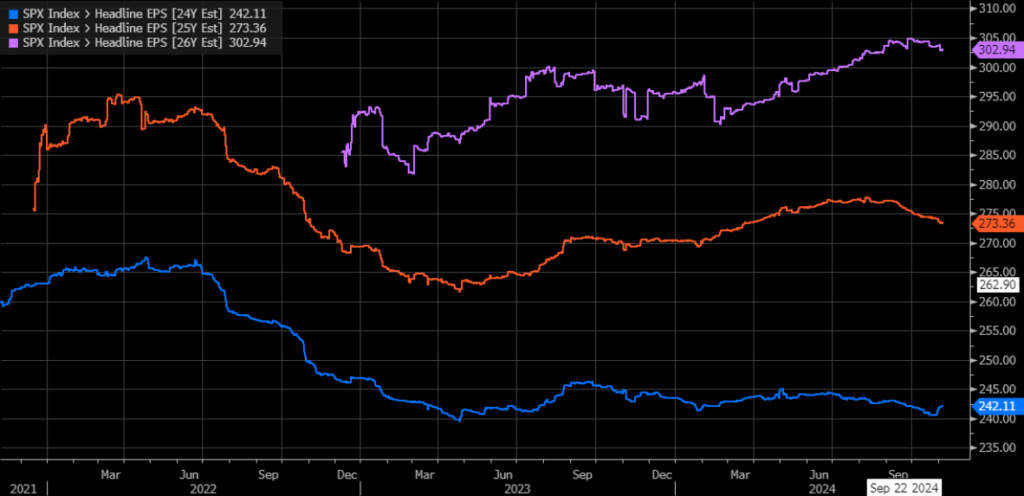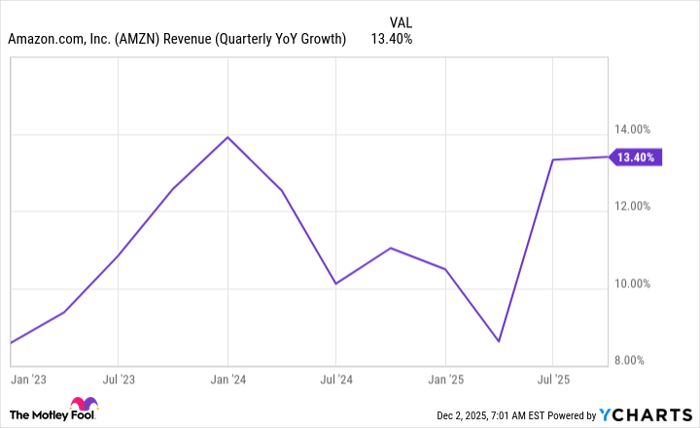Trump’s Upcoming Presidency: What It Means for the Economy and Market Performance
With the election results finalized, Donald J. Trump is set to take office as the 47th president of the United States this January. His victory, bolstered by a strong Republican majority in both the House and Senate, positions him to implement his economic agenda during his first two years.
These changes are poised to significantly impact the U.S. economy and the stock market.
In the wake of the election news, stock markets are reacting positively. Overall market indices have rallied more than 2%, driven largely by substantial gains in technology and financial sectors, particularly among small-cap stocks. Cryptocurrencies are also experiencing a boost; Bitcoin (BTC/USD) has surged to new all-time highs.
Yet, even with this impressive market performance, questions loom over the sustainability of this rally. Investors and the public ponder: Will the market maintain its momentum? What implications do changing oil prices, inflation, and interest rates hold? Which sectors are likely to thrive under Trump’s leadership, and which might suffer?
In response to these uncertainties, we have analyzed market data and formulated a list of 10 key economic outcomes to expect with Trump set to reclaim the presidency.
Let’s explore how to strategically navigate the coming years as Donald Trump steps back into the White House.
1: Forecasting Stock Market Gains
With a Republican-controlled Congress, Trump is anticipated to both extend and solidify the 2017 Tax Cuts and Jobs Act, which should bolster consumer confidence and increase spending and investment. This economic activity is expected to drive corporate earnings growth in 2025 and 2026. There are predictions that the corporate tax rate could decrease from 21% to 15%, potentially raising earnings per share (EPS) by around 4%, according to Goldman Sachs. Overall, we expect a 15% yearly increase in earnings through 2026, presenting a strong potential for further stock price appreciation. Historically, during Trump’s previous term, the S&P 500 appreciated nearly 40% from January 2017 to December 2019, suggesting the possibility of a similar trend ahead.

2: Oil Prices May Stabilize, While Inflation Remains Uncertain
We project that oil prices could stabilize over the next 12 to 24 months. Increased economic activity in the U.S. may be counterbalanced by heightened domestic oil production. Should oil prices hover around $70, inflation is likely to remain between 2% and 3%. However, a stronger economic performance in 2025 and 2026 could elevate inflation risks, despite relatively stable inflation rates observed during Trump’s first term from 2017 to 2019. Therefore, inflation is viewed as a potential variable risk factor.

3: Interest Rates May Pose a Similar Risk
The future trajectory of interest rates and Treasury yields remains uncertain. Adjustments to fiscal policy under Trump’s leadership could influence monetary policy decisions. Continued assessment will be crucial as the economic landscape evolves.
Interest Rates and Inflation: The Future of the Stock Market Under Trump’s Policies
Understanding the Market Shift: Inflation and Interest Rate Impacts
The future of interest rates will largely depend on inflation trends in the upcoming quarters. If Trump’s economic policies increase inflation, interest rates may not decrease as much as some market analysts predict. Currently, the market anticipates four interest rate cuts by the end of 2025, remaining steady from pre-election forecasts. However, should inflation rise in the coming months, we might see only two or three cuts, resulting in higher Treasury yields. Conversely, if inflation remains subdued, the possibility of more than four cuts remains, leading to lower Treasury yields. More data from the early months of Trump’s new term will be needed to better understand the interest rate trajectory.

The Stock Market’s Bright Future Is Tied to Inflation Trends
Stocks may face a promising 12 to 24 months ahead, but the extent of growth will be influenced by what happens with inflation and interest rates. Low inflation and declining interest rates could lead to an increase in valuation multiples on the S&P 500, fueling significant stock growth. However, should inflation rise and interest rates remain elevated, this could shrink valuation multiples, diminishing potential gains for investors. Presently, stocks are trading at approximately 20 times forward earnings, factoring in tax cuts under Trump in 2025 based on an estimated 4% boost from Goldman Sachs. This corresponds to a 5% forward earnings yield, which still surpasses the 10-year Treasury yield of 4.45%. If Treasury yields remain stable or drop below 4.5%, stock multiples might grow, offering a chance for even greater returns. Yet, if yields approach or exceed 5%, stock growth could be stifled.
This economic scenario stands out as a crucial aspect of Trump’s upcoming presidency. If inflation remains in check and interest rates fall further, the stock market could see increases of over 30% in the next two years. In contrast, if inflation heats up and interest rates stay high, stock growth might be modest at best. A clearer picture should emerge by early to mid-2025 as the impacts of Trump’s policies on inflation become evident. Until then, it is advisable to monitor incoming monthly inflation data closely.

Large-Cap Stocks Have an Edge Over Smaller Counterparts
Despite a recent surge in small cap stocks following Trump’s election victory, historical trends indicate that his economic policies favor large-cap stocks. Between 2017 and 2019, the S&P 500 large-cap index rose by about 43%, whereas the S&P 600 small-cap index only increased by 20%. Historically, during Trump’s first term in office, large-cap stocks outperformed their small-cap counterparts by a margin of more than two to one prior to COVID-19. Thus, it is anticipated that large-cap stocks, which have already been leading since late 2022, will continue to thrive, while small-cap stocks may lag behind.
Growth Stocks Poised for Continued Success in the Coming Years
Economic Policies Favor Growth Stocks
Former President Donald Trump’s policies are expected to drive economic growth, benefitting growth stocks. Historical data supports this notion. Between 2017 and 2019, the S&P 500 Growth index saw a significant rise of 58%, while the S&P 500 Value index only increased by 27%. Additionally, the Russell 2000 Growth index climbed nearly 40%, contrasting sharply with the Russell 2000 Value index, which gained less than 10%. This trend clearly shows that growth stocks outperformed their value counterparts during Trump’s administration (prior to the COVID-19 pandemic). Furthermore, large-cap growth stocks outdid small-cap growth stocks. This pattern appears likely to continue, suggesting that growth stocks will maintain their advantage over value stocks in the future.

Emerging Tech Stocks Stand to Gain Significantly
Recent trends show that while growth stocks, overall, have thrived during the current AI-driven market, newer and smaller tech stocks—often referred to as “new-school” growth stocks—have not kept pace. A prime example is Cathie Wood’s ARK Innovation ETF (ARKK), which has underperformed the large-cap Nasdaq 100 index over the past two years. However, during the early days of Trump’s first term, ARKK experienced a remarkable surge, climbing nearly 150% from 2017 to 2019. The supportive environment for innovation and startups during his administration played a role in this growth. As we look ahead, coupled with J.D. Vance’s ties to Silicon Valley and the tech startup sector, we anticipate that new-school tech stocks will see significant gains in the near future.
Nuclear Stocks on the Rise as Clean Tech Faces Challenges
Clean Tech Struggles Amid Market Surges
While the overall stock market experienced gains today, clean tech companies faced substantial setbacks. Many stocks in the solar, wind, hydrogen, EV, and energy storage sectors saw double-digit declines. Experts point to expected changes in U.S. energy policy under a potential Trump administration, which may involve the elimination of green-energy tax credits from the Inflation Reduction Act. Analysts predict a challenging environment for clean energy stocks like these if Trump takes office. Conversely, nuclear energy stocks are gaining support, reflecting a pro-nuclear stance from the Republican Party. This shift may position nuclear power as a primary energy source, suggesting strong potential for nuclear stock performance in the upcoming years.

Positive Outlook for Financial Stocks
Financial stocks have the potential to excel, driven by expectations of deregulation and economic growth. During Trump’s first term, financial firms experienced significant profit growth, and a similar trend is anticipated in the next few years as Republicans maintain control of Congress. Continued deregulation of the financial sector could benefit banks, lenders, and related businesses. Bullish investors are showing optimism for credit service companies such as Discover Financial Services (DFS) and Synchrony Financial (SYF), which were among today’s top-performing stocks. This outlook is backed by a strong consensus among market analysts, who predict continued growth in this sector.

Real Estate Stocks Face Challenges Amid Political Uncertainty
Interest Rates Loom Over Market Prospects
Real estate stocks, similar to clean energy stocks, struggled to gain traction in today’s market rally. The primary concern is the potential rise in interest rates linked to the possibility of a Trump presidency. Higher interest and mortgage rates could hamper the housing market, which has remained stagnant for the last two years due to elevated rates. Consequently, real estate stocks may face significant risks if Trump’s policies lead to increased inflation. On the flip side, if forthcoming data indicates that Trump’s strategies are not inflating the economy, these risks might diminish. As always, time will reveal the outcome.
Understanding the Impacts of a Trump Presidency
Donald Trump’s recent election victory presents a mix of opportunities and risks for the market.
While the prospect of increased earnings per share (EPS) appears advantageous, the threats associated with potential valuation declines due to higher rates remain unclear. As long as this uncertainty prevails, stock prices may continue to rise.
In our view, stocks are likely to see short-term growth.
Furthermore, if inflation data in 2025 remains stable, the associated risks may fade. Should this happen, the market could stabilize, paving the way for a robust stock performance in the long term.
Looking ahead to a possible bull market in 2025 or 2026, it’s anticipated that it would be spearheaded by large-cap growth stocks, particularly across the technology, financial, and consumer sectors.
The investment takeaway?
Concentrate on growth stocks within the tech, financial, and consumer domains, while considering a strategic investment in innovative tech companies.
This investment strategy seems promising for the time being.
Stay informed about our preparations for Trump’s second term.
As of the publication date, Luke Lango had no direct or indirect positions in the securities mentioned in this article.
P.S. Keep pace with Luke’s latest market insights by checking our Daily Notes! Explore the most recent updates on your Innovation Investor or Early Stage Investor subscriber site.









